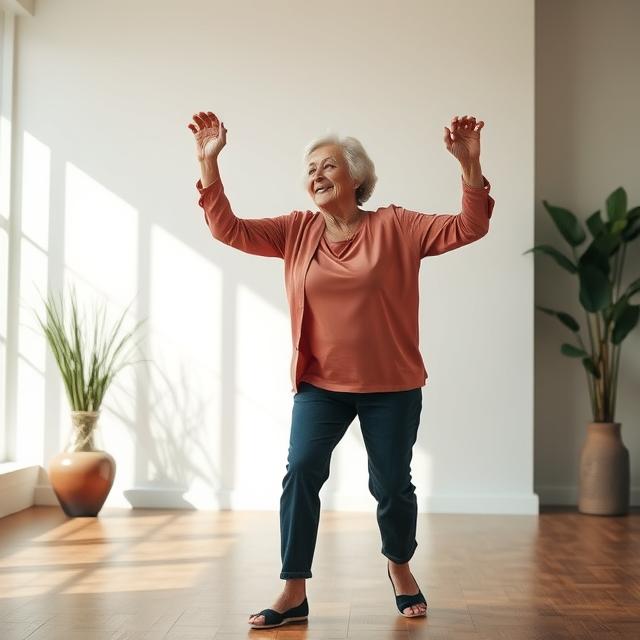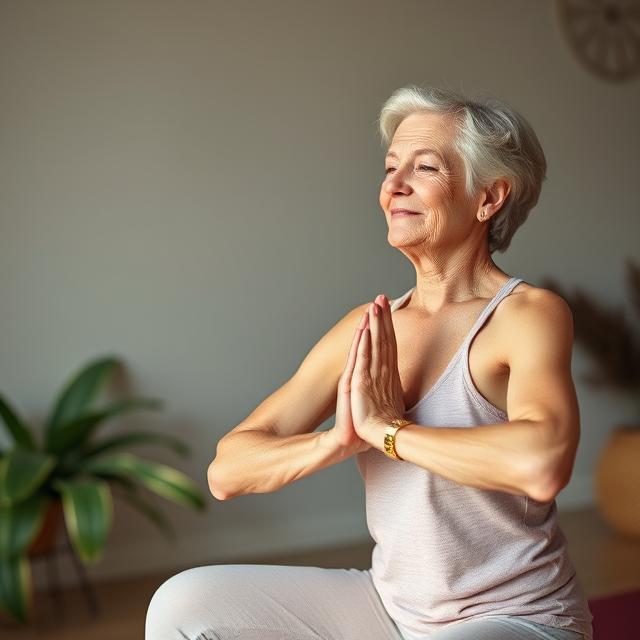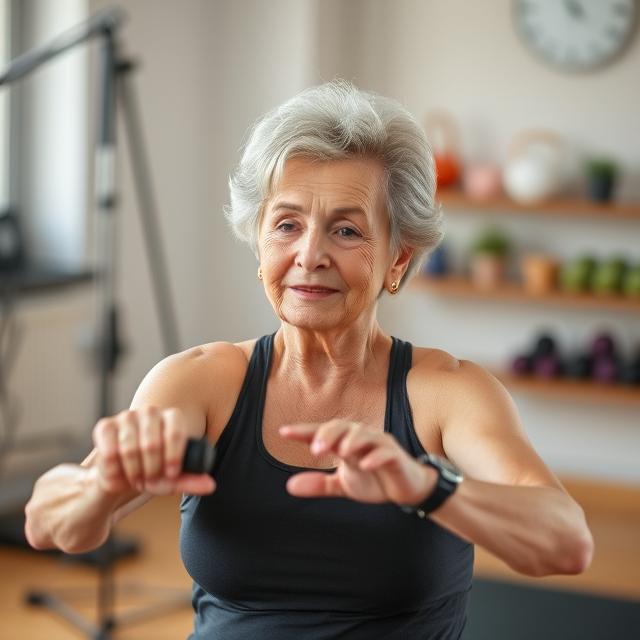Staying active after 60 is not just about adding years to your life—it’s about adding life to your years. Regular movement helps maintain balance, flexibility, strength, and overall vitality. It reduces the risk of chronic illness, supports mental health, and improves sleep and mood. And the best part? Staying active doesn’t mean sticking to rigid, joyless workouts. There are countless enjoyable activities that can be adapted to your fitness level, preferences, and lifestyle. Whether you’re newly retired, a lifelong mover, or getting back into exercise after a break, the key is to find movement you genuinely enjoy. Below are six engaging forms of exercise that are accessible, adaptable, and perfect for thriving at any stage of life.
1. Walking: The Simple Power of Putting One Foot in Front of the Other
Walking remains one of the most accessible and beneficial forms of exercise for adults over 60. It requires no special equipment, can be done almost anywhere, and has a low risk of injury. Beyond its simplicity, walking supports cardiovascular health, strengthens bones, improves mood, and helps maintain a healthy weight. Walking outdoors adds the bonus of fresh air, sunshine (for vitamin D), and opportunities to engage with neighbors or enjoy nature. A brisk 30-minute walk five days a week can significantly reduce the risk of heart disease, stroke, and diabetes. It also improves balance and coordination, which are essential for preventing falls. If walking long distances feels daunting, try breaking it up into shorter walks throughout the day. Add variety by changing your route, walking with a friend, or using walking poles for added support and upper-body engagement. Whether it’s a morning stroll around your neighborhood or laps at the mall during inclement weather, walking is a sustainable, adaptable, and effective way to stay active well into your golden years.

2. Swimming: Low-Impact Movement With High Rewards
Swimming is often described as the perfect exercise for older adults, and for good reason. It offers a full-body workout without placing strain on joints, making it ideal for those with arthritis, osteoporosis, or past injuries. The water supports your body while still providing resistance to strengthen muscles, improve endurance, and boost cardiovascular health. In addition to laps, water aerobics and aqua walking are fantastic aquatic alternatives that blend fun with function. These classes are social and low-pressure, often accompanied by upbeat music and led by instructors trained to accommodate various ability levels. Swimming also promotes deep breathing and relaxation, reducing stress and improving mental clarity. For those concerned about balance on land, water-based exercise eliminates fall risks while still promoting coordination and flexibility. Many community centers and gyms offer senior swim hours or classes tailored to older adults, creating a welcoming environment. With the ability to modify intensity and focus on range of motion, swimming stands out as a rejuvenating, enjoyable form of movement that supports both physical and emotional well-being after 60.

3. Tai Chi: The Gentle Flow That Builds Inner and Outer Strength
Tai Chi is a centuries-old Chinese practice that combines slow, flowing movements with deep breathing and mindfulness. Often described as “meditation in motion,” it’s particularly well-suited for older adults due to its low-impact nature and wide-ranging benefits. Tai Chi enhances balance, flexibility, posture, and coordination—qualities that naturally decline with age but are crucial to maintaining independence. Regular practice has been shown to significantly reduce the risk of falls, a major concern for many seniors. The gentle, deliberate motions also improve joint mobility and circulation, making it a beneficial choice for those with arthritis or other chronic conditions. Tai Chi’s focus on deep breathing and intentional movement nurtures mental calmness and reduces anxiety and depression. Classes are typically held in community centers, parks, or senior centers, fostering social interaction and a sense of belonging. Whether practiced alone at home or with a group under the guidance of a skilled instructor, Tai Chi offers a holistic approach to fitness that nurtures body, mind, and spirit—making it a powerful, age-embracing practice that supports graceful aging.

4. Strength Training: Empower Your Muscles and Your Mind
Contrary to the myth that strength training is only for the young or athletic, lifting weights or using resistance bands is not only safe but highly beneficial for older adults. After 60, muscle mass and bone density naturally decline, increasing the risk of falls, fractures, and loss of independence. Strength training slows this process, helping maintain physical function, metabolic health, and joint stability. It also supports better posture, balance, and coordination—all critical for daily activities like climbing stairs, carrying groceries, or getting out of a chair. Sessions don’t need to be long or intense. Just two to three times a week of moderate resistance work, focusing on all major muscle groups, can yield remarkable results. Exercises can include bodyweight movements (like squats and wall push-ups), dumbbells, resistance bands, or even household items like water bottles. Many gyms and senior centers offer age-friendly strength classes or personal training sessions tailored to individual needs. The mental boost from feeling physically stronger often translates into greater confidence and independence. Strength training is a direct investment in the quality of life, vitality, and self-reliance well into older age.

5. Dancing: Joyful Movement That Keeps the Heart and Soul Young
Dancing is more than just fun—it’s a lively and effective form of cardiovascular exercise that nurtures emotional well-being, balance, memory, and social connection. Whether it’s ballroom, line dancing, Zumba Gold, or simply grooving in your living room to favorite tunes, dancing engages the whole body and lifts the spirit. It improves coordination and flexibility while giving the heart a healthy workout. Unlike repetitive workouts, dance is mentally stimulating—learning steps or routines enhances cognitive function, reaction time, and memory. Participating in group dance classes offers a sense of community and encourages regular social interaction, which is vital for emotional health in older adulthood. For those with limited mobility, seated dance classes are also available, allowing movement and rhythm to be enjoyed at any level of ability. Dancing doesn’t feel like “exercise,” which is exactly what makes it so sustainable and fun. It combines music, creativity, and self-expression in a way that few other forms of movement can. Dancing keeps you mentally sharp, emotionally uplifted, and physically engaged—adding zest to life with every step.

6. Yoga: Flexibility, Balance, and Peace of Mind
Yoga is a versatile practice that offers physical, mental, and emotional benefits for older adults, regardless of experience or fitness level. Its emphasis on flexibility, strength, and balance makes it a strong ally in countering the effects of aging. Gentle yoga classes, especially those designed for seniors, often include modifications using props like chairs, blocks, or straps to ensure safety and accessibility. These adaptations allow participants to experience the benefits of poses without strain or discomfort. Physically, yoga enhances joint health, posture, coordination, and breathing—reducing chronic pain, improving digestion, and even helping with sleep. Mentally, yoga encourages mindfulness and stress reduction, offering a calm counterbalance to the chaos of daily life or post-retirement transitions. The integration of breathwork and meditation supports emotional resilience and focus. Yoga classes are often welcoming and inclusive, encouraging a supportive atmosphere where participants can move at their own pace. Whether practiced in a studio, at home with a video, or outdoors in nature, yoga empowers individuals to listen to their bodies, cultivate inner peace, and stay gracefully mobile through all stages of life.

Remaining active after 60 isn’t about chasing youth—it’s about celebrating your vitality and living life fully. Exercise doesn’t have to be strenuous or feel like a chore. When you choose activities that you genuinely enjoy—whether it’s walking with a friend, floating in a pool, or moving through a yoga flow—you create a sustainable, uplifting routine that supports your physical health and enriches your emotional well-being. The key is consistency, curiosity, and a willingness to adapt. You don’t have to be perfect—you just have to keep moving. Every step, stretch, and dance counts. Let your later years be defined not by limitation but by momentum, freedom, and joy.


